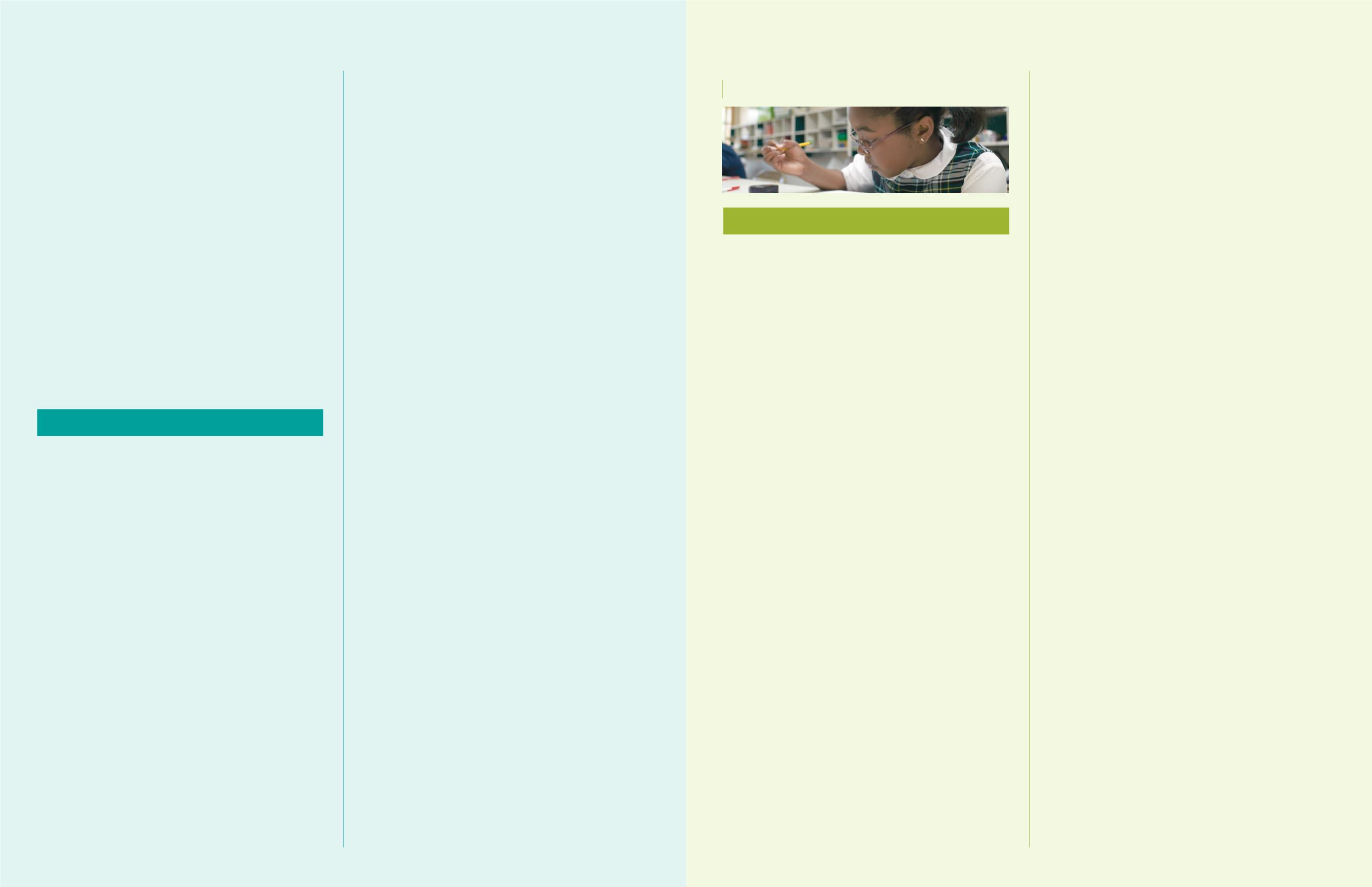
Cultural Awareness
•
Demonstrate an understanding of the Spanish
culture including perspectives, practices, and
products (e.g., explore differences in holiday
celebrations among Spanish speaking countries;
describe monuments and landmarks that are
found in Spanish speaking countries; research
and report on contributions of Spanish culture
in the United States; use the Internet or print
media to look at paintings by famous Spanish
artists)
•
Discuss differences and similarities of Spanish
and American cultures
•
Discuss current events that pertain to Spanish
speaking countries
•
Identify areas of the United States where
Spanish is spoken extensively
•
Discuss the meaning of stereotyping and its
effect on different cultures and people
STUDY SKILLS
Research and Resources
•
Use key words, indexes, and letters on volumes
to find information for research topic amongst
both print and virtual sources
•
Begin to use encyclopedias and grade
appropriate approved Internet search engines
to gather information for research topics
•
Use multiple representation of information
(e.g., maps, charts, photos) to find information
for research topics
•
Have a basic understanding of the concept of a
primary source
•
Demonstrate competence in applying the
reading process to specific types of
informational texts
•
Use dictionaries to check for proper spelling
•
Use the table of contents to locate page
numbers and chapters
•
Begin using word processing tools
•
Understand the symbols and operations on a
calculator
Applications
•
Identify the main idea of simple expository
text
•
Use graphic organizers to demonstrate
understanding of text
•
Use graphic organizers as part of the writing
process
•
Retell the key facts in a passage
•
Sequence events to determine beginning,
middle, and end of a passage
•
Pick out key vocabulary to help determine
meaning
•
Begin using index cards as a study tool
•
Begin to use mnemonics or word association to
memorize key items
Work Habits
•
Employ a classroom binder system to manage
classwork and homework
•
Use a notebook to track and manage
classroom assignments and projects
•
Begin to develop independent work skills
•
Hand in assignments in a timely manner
•
Begin to develop a sense of time management
•
Employ self-regulation skills to monitor work
output
•
Locate information by scanning text or
visual resources
•
Skim material for specific information
•
Understand the various purposes for reading
and adjusts rate for study reading, reading for
recreation, and reading for information
•
Read and follow multiple directions
independently
•
Work independently in small cooperative
groups and larger group settings
•
Begin to take notes from oral and written
material
•
Record information on graphic organizers
53
Third Grade
LITERACY
Literature
Key Ideas and details
•
Refer to details in text when explaining what
text says explicitly and drawing inferences from
text
•
Determine a theme of a story, drama, or poem
from details in the text; summarize the text
•
Describe in depth character, setting, or event in
story or drama, drawing on details in text
•
Explain how characters and events in literary
work are like those in their own life
Craft and structure
•
Determine meaning of words and phrases as
they are used in text
•
Explain major differences between poems,
drama, and prose, and refer to the structural
elements of poems and drama) when writing or
speaking about a text
•
Compare and contrast the point of view from
which different stories are narrated
Integration of knowledge and ideas
•
Make connections between text of a story
or drama and a visual or oral presentation
of the text
•
Compare and contrast the treatment of similar
themes and topics
Range of reading and level of text complexity
•
Read and comprehend literature, including
stories, dramas, and poetry
Reading Information Text
Key ideas and details
•
Refer to details and examples in a text when
explaining what the text says explicitly and
when drawing inferences from the text
•
Determine the main idea of text and explain
how it is supported by details; summarize the
text
•
Explain events, procedures, ideas, or concepts
in a historical, scientific, or technical text
•
Determine fact and opinion
Craft and structure
•
Determine the meaning of general academic
and domain-specific words or phrases in a text
•
Describe overall structure of events, ideas,
concepts, or information in a text or part of
a text
•
Compare and contrast a firsthand and
secondhand account of the same event or topic
Integration of knowledge and ideas
•
Interpret information presented visually, orally,
or quantitatively
•
Explain how an author uses reasons and
evidence to support particular points in a text
•
Integrate information from two texts on the
same topic in order to write or speak about the
subject knowledgeably
Range of reading and level of text complexity
•
Read and comprehend informational texts,
including social studies, science, and technical
texts
Phonics and Word Recognition
•
Know and apply grade-level phonics and word
analysis skills in decoding words
•
Use combined knowledge of all letter-sound
correspondences, syllabication patterns, and
morphology to read accurately unfamiliar
multisyllabic words in context and out of context
Fluency
•
Read with sufficient accuracy and fluency to
support comprehension
•
Read grade-level text with purpose and
understanding
•
Read prose and poetry orally with accuracy,
appropriate rate, and expression
•
Use context to confirm, self-correct word
recognition and understanding, rereading
as necessary
•
Develop vocabulary by reading independently
and connect meaning to real world experiences
•
Perform rapid and accurate word naming when
54
Nobel Learning Curriculum Reference Guide
Fourth Grade


